Impacts of COVID-19 on People with Disabilities _review
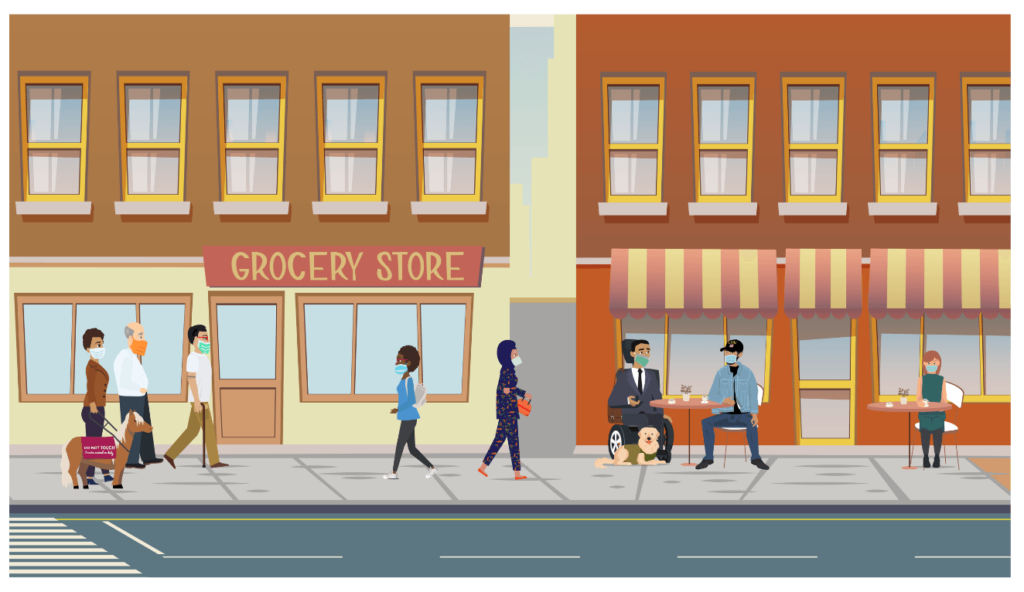
It may not look like it but the people in this scene are socially distanced.
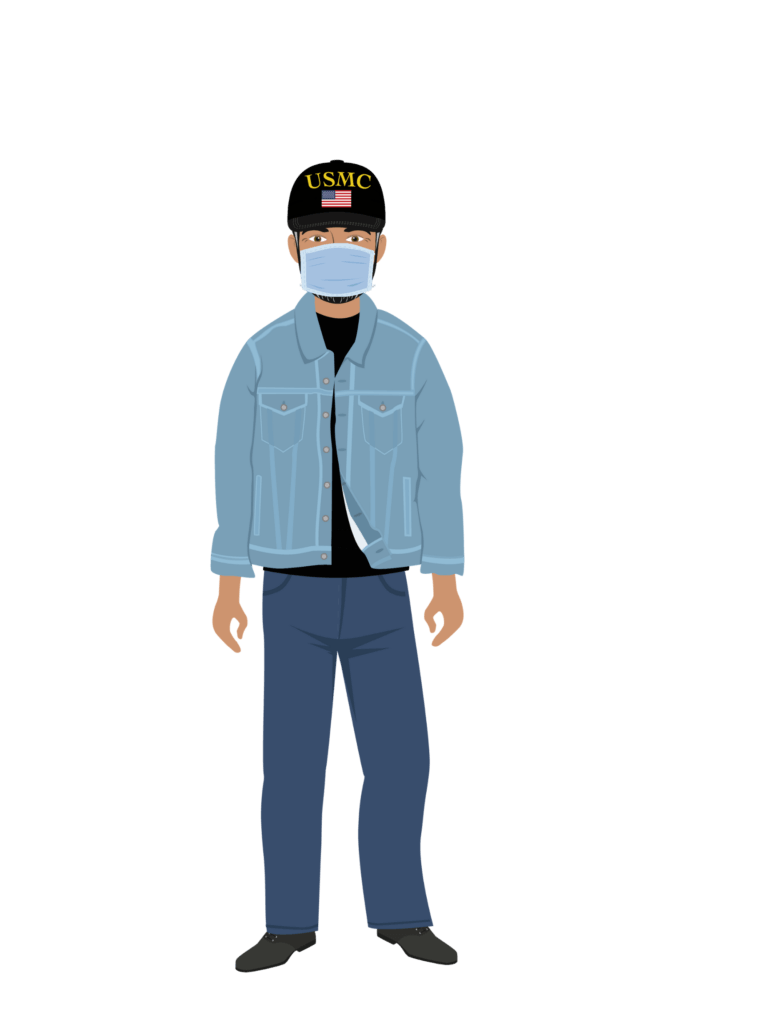
Rafe: We’ve got to talk about COVID-19, you know. This pandemic has impacted disabled people A LOT.
Disabled people have had their services and supports limited or stopped.
Disabled people who have COVID-19 are hospitalized more than nondisabled people.
Disabled people have higher rates of pre-existing conditions associated with death from COVID-19.
In Washington state, a 13.5% death rate was reported for people with intellectual disabilities who have COVID-19 and live in state supported group homes. This was almost triple the state’s rate at the time of the news story. Similar numbers were reported in Oregon, Pennsylvania and New York.
About 40% of total COVID-19 deaths in the United States are of people living in congregate care settings.
COVID-19 has also disproportionately impacted Indigenous People and People of Color. Disproportionate impact means that the higher COVID-19 rates in communities of color can’t be explained by demographics alone. COVID-19 is an example of health inequity: unequal health outcomes because of discrimination, lack of resources, or lack of healthcare access.
For instance, Black individuals have a COVID-19 mortality rate almost 2 times higher than White individuals, and American Indian or Alaskan Native individuals have a hospitalization rate almost 4 times as high as White individuals. As we shed light on how COVID-19 has disproportionately impacted communities of color and people with disabilities, it may be helpful to remind partners like local planners to use the community’s preferred language when describing a marginalized group.
If someone has a disability and is Black, Hispanic or Indigenous, they may be even more vulnerable to experiencing unequal health outcomes.
I heard a heartbreaking story recently about a disabled African American man named Michael Hickson. Michael Hickson got COVID-19 and had to be transferred from the long-term care facility he lived in to the hospital. His wife advocated for him to receive life-saving efforts. But his doctors assumed that his quality of life was less than a person without a disability. They didn’t act to save him. Sadly, he died a few days later.
This case was in the news. And his story is used to support the importance of disabled people receiving equal access to COVID-19 care.
We can assume that there are more cases like Mr. Hickson’s out there.
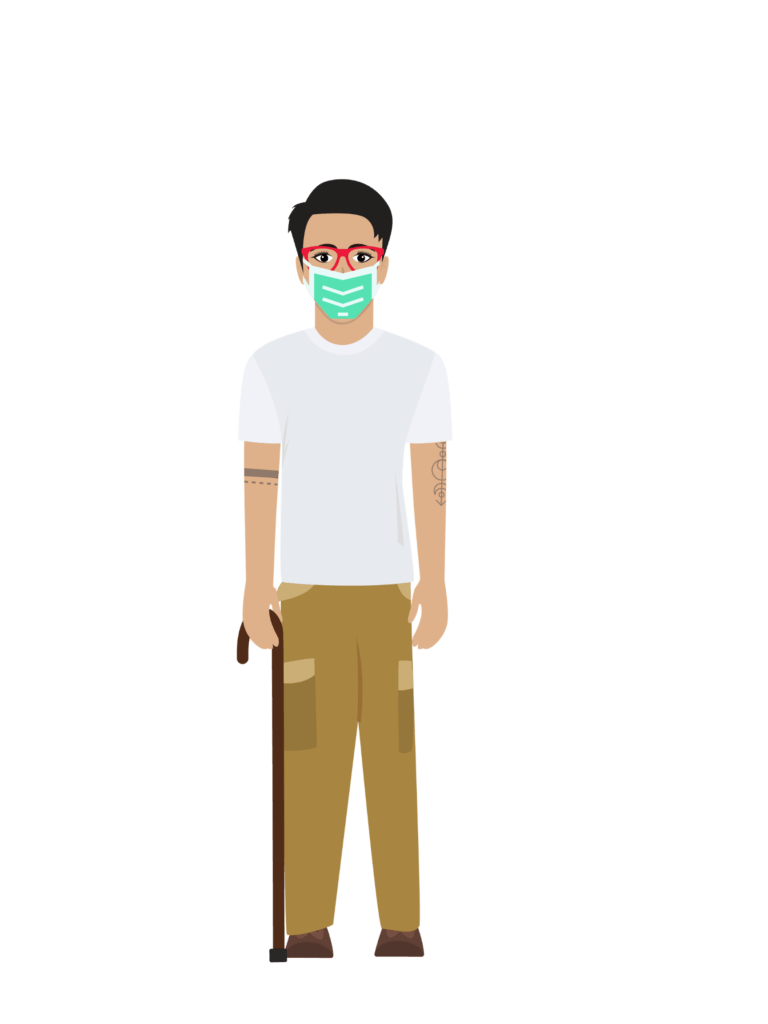
PJ: Rafe, thanks for sharing this. It’s SO awful. And depressing. Health care providers have to understand about disability as a way of life. And by law, medical rationing criteria can’t discriminate.
You know what? Based on effective persuasion, Alabama and Pennsylvania changed their medical rationing policies. Their original plans were to deny ventilators to people with certain disabilities.
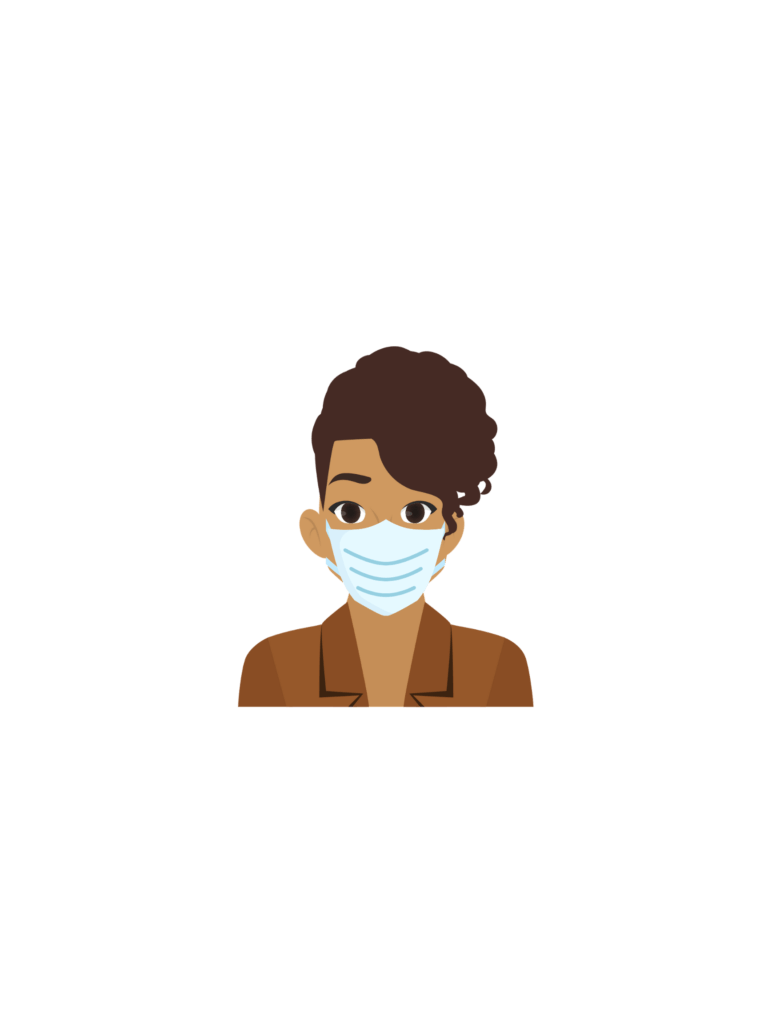
Carrie: Hey, there’s Maryam. She has an autistic adult son named Tariq. I’m glad he’s out of the hospital. He had knee surgery during the height of the COVID-19 pandemic. Maryam wasn’t allowed to see him in the hospital. You know, strict visitor policies due to COVID-19. No exceptions. Tariq shut down. The hospital staff weren’t able to keep him calm or comforted.
? Maryam says Tariq shut down. What else could have happened to him?
He could have learned to become more independent
Not quite. Would he be able to gain new skills if he were scared or upset?
He could have learned to communicate better
Not quite. Would he be able to gain new skills if he were scared or upset?
He could have been traumatized because no one understood him
That’s right. That hospital stay was so hard for Tariq and me. I was worried about him and I know Tariq was worried about me too! If they had allowed me to be with Tariq, I could have supported his communication needs and kept him calm, you know? I get that this was a policy. I get that there were reasons for it. But they didn’t think about the impact on someone like Tariq. I’m not just his mom, I’m his legal guardian. They didn’t understand the kind of support he needed even though he’s an adult. They wouldn’t or couldn’t make an exception. My online visits with him made him even more upset. This mess could have been avoided so easily if the staff had listened to me when I explained. Now Tariq and I are dealing with his trauma. That policy didn’t work for anyone.
His health could have gotten worse
That’s right. Tariq had surgery complications and stayed in the hospital longer because he couldn’t communicate with staff about pain. When they finally figured it out, it was almost too late. He was scared. He wasn’t able to do what the hospital staff asked
His behavior could have been hard to control
By the way, hospital staff weren’t prepared for a patient with autism. He was loud and moving around a lot. The staff didn’t know what to do. The staff had more work to do and got frustrated when they couldn’t understand him.
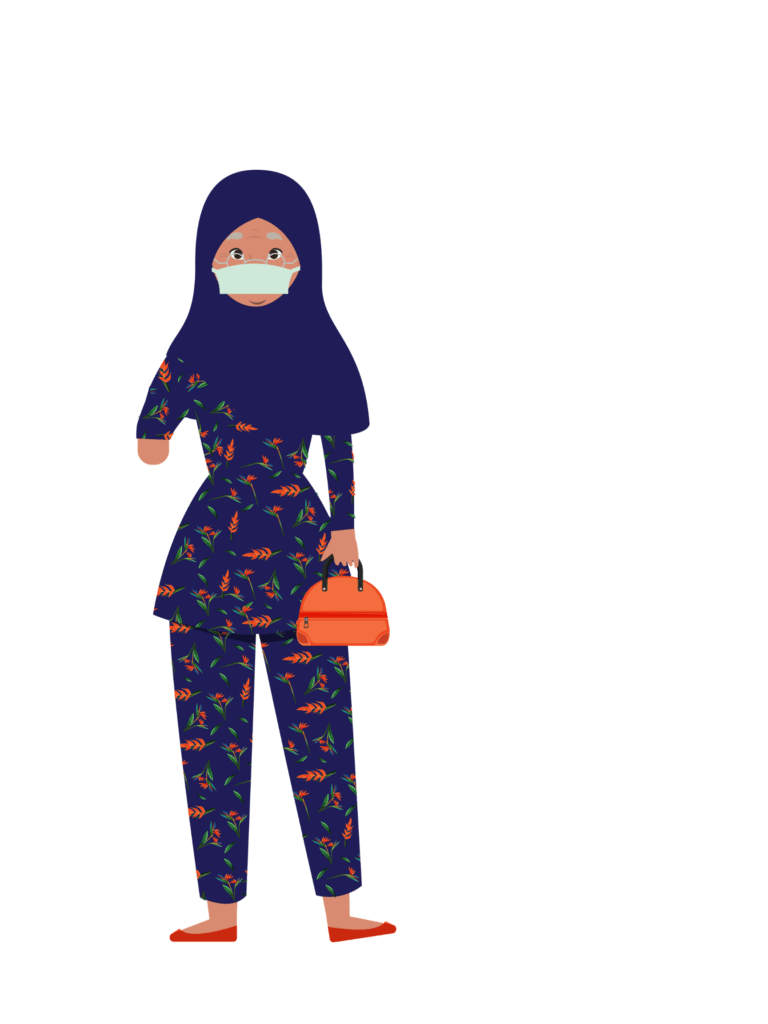
Maryam: That hospital stay was so hard for Tariq and me. I was worried about him and I know Tariq was worried about me too! If they had allowed me to be with Tariq, I could have supported his communication needs and kept him calm, you know? I get that this was a policy. I get that there were reasons for it.
But they didn’t think about the impact on someone like Tariq. I’m not just his mom, I’m his legal guardian. They didn’t understand the kind of support he needed even though he’s an adult. They wouldn’t or couldn’t make an exception.
Tariq had surgery complications and stayed in the hospital longer because he couldn’t communicate with staff about pain. When they finally figured it out, it was almost too late. He was scared. He wasn’t able to do what the hospital staff asked.
By the way, the hospital staff wasn’t prepared for a patient with autism. He was loud and moving around a lot. The staff didn’t know what to do. The staff had more work to do and got frustrated when they couldn’t understand him.
My online visits with him made him even more upset. This mess could have been avoided so easily if the staff had listened to me when I explained. Now Tariq and I are dealing with his trauma. That policy didn’t work for anyone.

PJ: I’m so sorry to hear that, Maryam. Hope Tariq is getting better. The lesson here is that it’s important for decision makers to think about who their policies will impact. And people with disabilities and allies have to be involved in policy decisions. “Nothing about us without us,” you know?
Disability organizations may also need to share with planners that people who don’t speak can often communicate their needs. For more information, check out Communication First’s COVID-19 Communication Rights Toolkit.
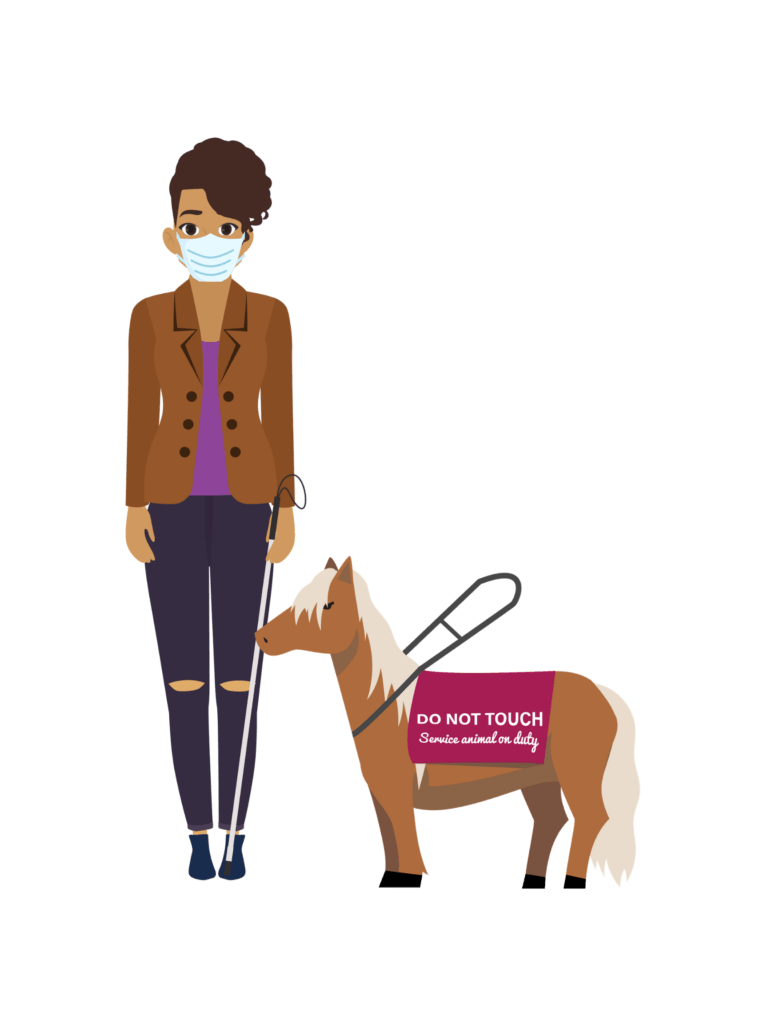
Carrie: Ok, now you’ve heard all the bad news. In your last visit, we gave you an example of the Prepared4ALL process in action. In upcoming visits we’ll talk more about strategy.
